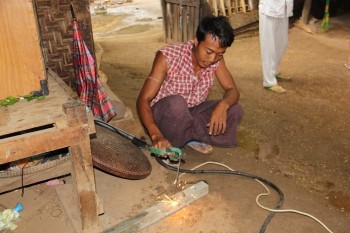Report
Bridging the energy gap: Demand scenarios for mini-grids in Myanmar
July 03, 2018
Myanmar’s future growth and prosperity depends largely on reliable, affordable and high quality access to electricity throughout the country. More than two-thirds of Myanmar’s 53 million people lack access to reliable electricity, many them in rural villages. Currently, more than 30,000 rural villages across Myanmar are not connected to the national grid. Even with the expansion of the grid through Myanmar’s National Electrification Plan, many will remain under-electrified for many years. While the current strategy to turn this around prioritizes grid-based electrification, such plans across the developing world have in most cases underperformed.
Decentralized solutions such microgrids can play a major role in supporting a modern, reliable decentralized energy system. If powered by renewable sources, they can also ensure that new electrification at the village level is environmentally sustainable. Most importantly, by providing reliable, quality electricity access, microgrids can greatly accelerate productivity and related development gains.
The government, together with public and private sector resources and developers, are beginning to invest in the decentralized energy sector, both via subsidies and through direct private sector investment. In order for that investment to grow and be deployed efficiently, developers, investors, policy-makers and communities need quality information and data on energy demand in order to make appropriate evidence-based decisions. Beyond anecdotal evidence from various early projects, very little is currently known about trends in energy use from microgrids in rural Myanmar, and that makes it hard for business modelers to plan for potential future demand. This gap is especially severe for productive uses tied to the commercial and agricultural use of machinery in villages.
In an attempt to shed light on this gap and to provide insights into current and potential future energy uses and related demand- and supply-side challenges, in October 2017 Pact Myanmar commissioned TFE Consulting to conduct a survey of 50 villages in Myanmar’s Dry Zone – 44 non-grid connected (NGC), assess current energy demand, and prepare scenarios of future energy use. This report is designed to provide key data and insights to energy services companies (ESCO’s), financing institutions, development institutions and policymakers.
This work is licensed under the Creative Commons Attribution-ShareAlike 3.0 Unported License. To view a copy of this license, visit http://creativecommons.org/licenses/by-sa/3.0/ or send a letter to Creative Commons, 444 Castro Street, Suite 900, Mountain View, California, 94041, USA.
RELATED RESOURCES
Stay Updated. Subscribe Now.
Pact's e-newsletter offers the latest on our efforts around the world to build thriving, resilient and engaged communities that are leading their own development.
